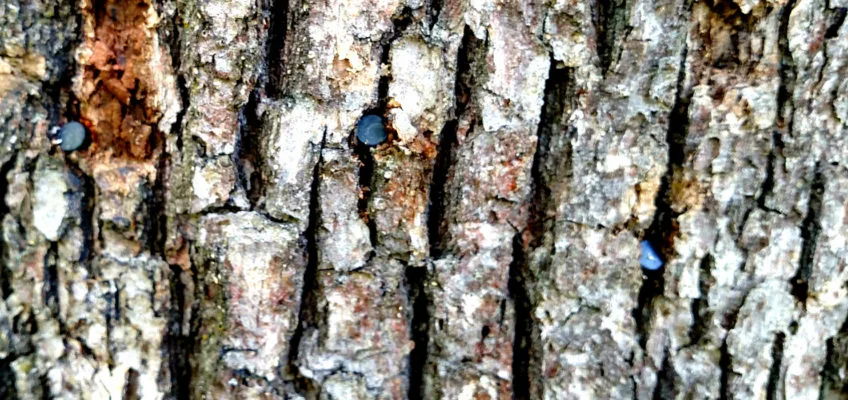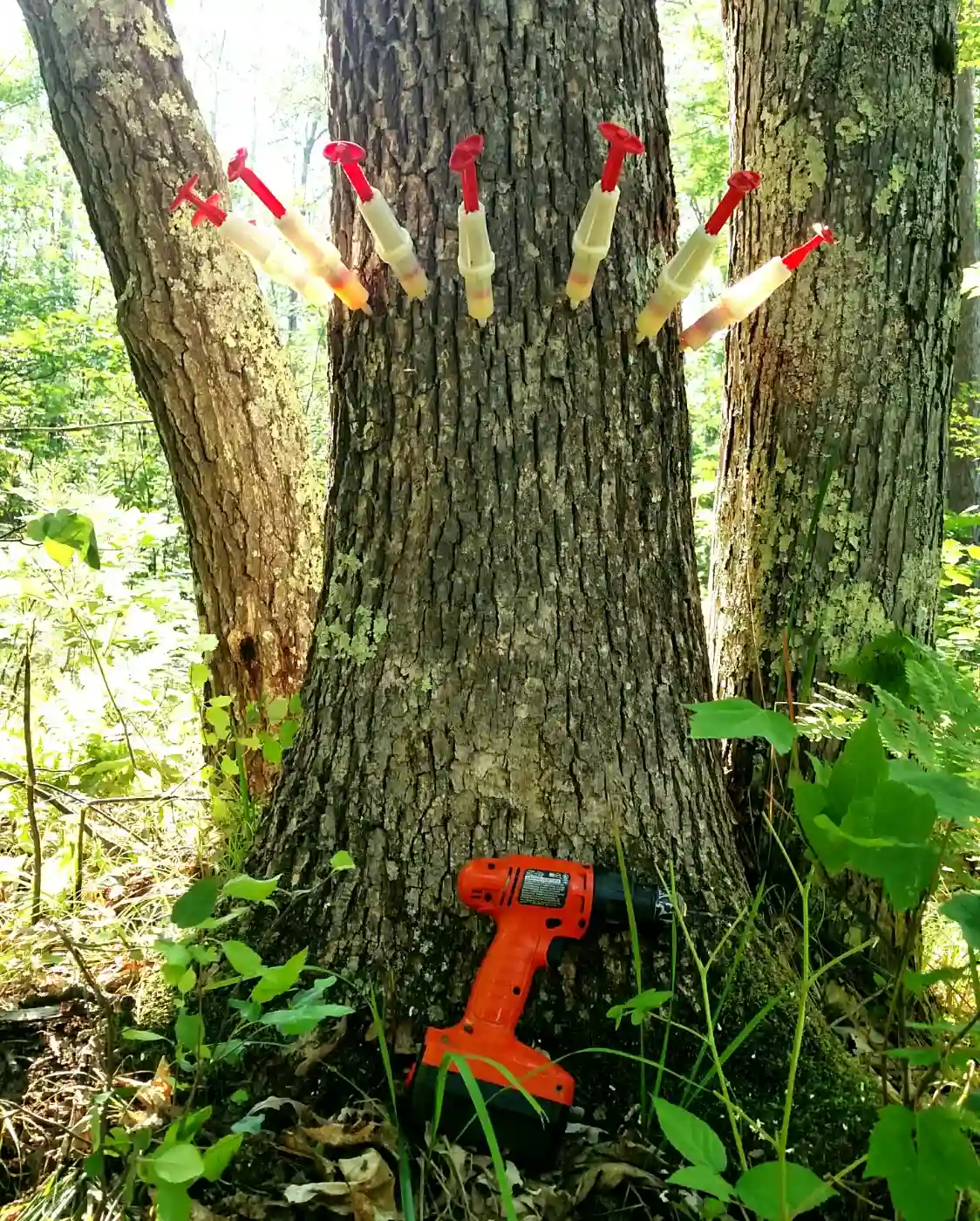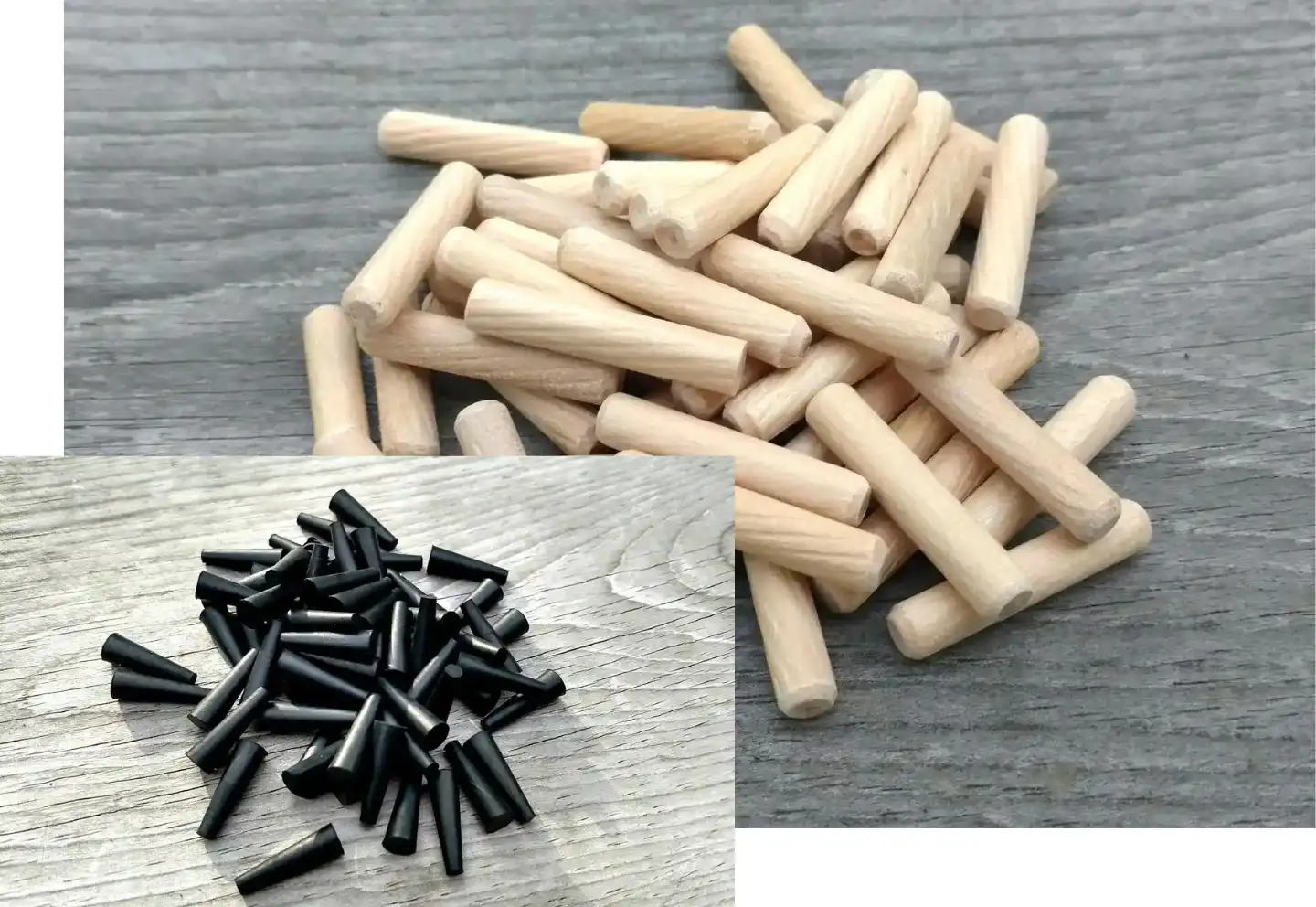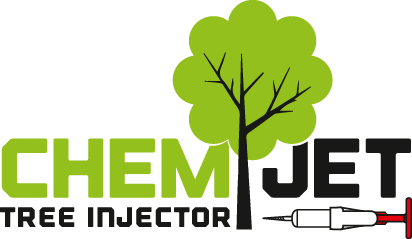Plugs for Tree Injection Holes

Plugs for Tree Injection Holes
Plugs can be used to avoid consequences from tree wounding necessary as part of tree injection treatments.
Tree injection for treatment using the Chemjet Tree Injector necessitates drilling 11/64 holes at the injection points. The rate at which these tree wounds heal up varies by the species and health of the tree. In general drilling holes in the trees for beneficial injection treatments does not cause significant harm to the tree and the holes can be left to heal up naturally. There are many natural causes for holes in trees, including boring insects and woodpeckers, which the trees accommodate for with natural closing of the wound in short time. The historic and widespread tapping of maples for sap to make maple syrup is another example of tree wounding without much consequence.
Other Treatments and Info
- Oak Wilt Prevention and Treatment
- Save Your Trees from Oak Wilt
- Microinjection to Protect Trees From Oak Wilt
- Emerald Ash Borer Treatment
- Dutch Elm Disease
- Pine Bark Beetle Injection Treatment
- Sudden Oak Death
- Hemlock Woolly Adelgid Treatment
- Asian Longhorned Beetle Treatment
- Caterpillars, Beetles, Borers
- Orchard Crops Treatment
- Plugs for Tree Injection Holes
- Chemjet Tips and Ideas


Other Treatments and Info
- Oak Wilt Prevention and Treatment
- Save Your Trees from Oak Wilt
- Microinjection to Protect Trees From Oak Wilt
- Emerald Ash Borer Treatment
- Dutch Elm Disease
- Pine Bark Beetle Injection Treatment
- Sudden Oak Death
- Hemlock Woolly Adelgid Treatment
- Asian Longhorned Beetle Treatment
- Caterpillars, Beetles, Borers
- Orchard Crops Treatment
- Plugs for Tree Injection Holes
- Chemjet Tips and Ideas

